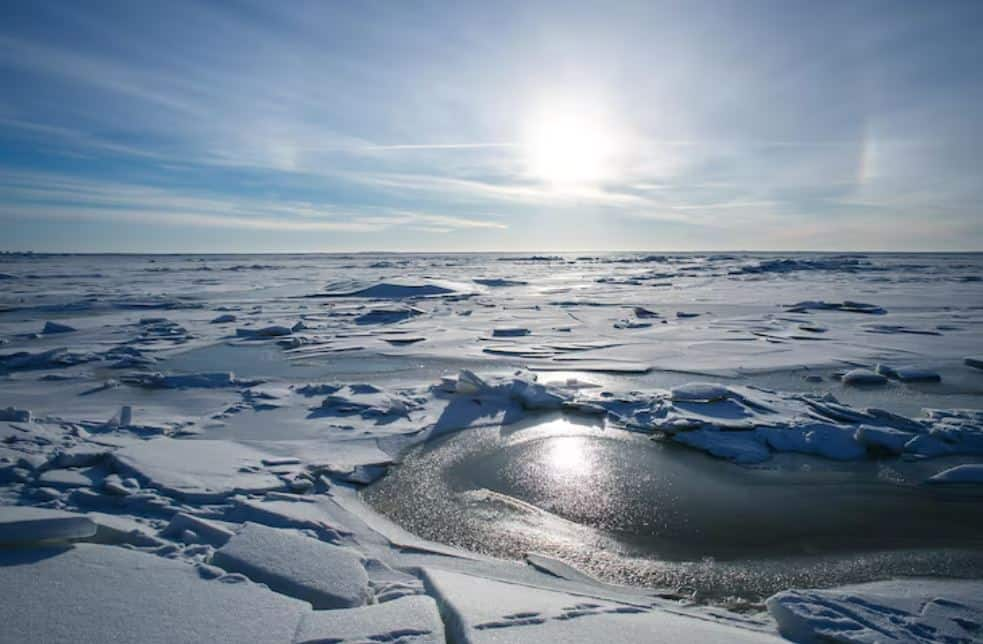The Hidden Hazard Beneath Melting Antarctic Ice: On the finish of the final Ice Age, one thing dramatic unfolded off the coast of Antarctica. As sea ice melted again towards the continent, it was like uncorking a soda bottle, stress within the ocean dropped, slowing the pure course of that traps carbon dioxide within the deep sea. The consequence? The Earth’s temperature rose dramatically, pushing the planet out of the Ice Age.
Now, scientists warn that historical past may very well be repeating itself. As Antarctic sea ice continues to shrink at alarming charges, new analysis suggests it might once more disrupt an important ocean course of, one which acts because the planet’s largest carbon sink.
How the Ocean Shops Carbon and Why It Issues
The ocean performs an important function in preserving our planet cool by absorbing and storing carbon dioxide (CO₂). One key participant on this course of is Antarctic Backside Water (AABW), a dense, icy present that kinds when seawater freezes close to Antarctica. This chilly water sinks to the ocean flooring, carrying trapped CO₂ deep into the abyss for hundreds of years.
Nonetheless, when melting sea ice weakens AABW formation, much less carbon is trapped, and extra escapes again into the ambiance. This shift might speed up world warming, disrupt climate techniques, and scale back the ocean’s skill to buffer human-caused emissions.
A Groundbreaking Discovery
Local weather scientist Chengfei He from Northeastern College led a group that analysed seabed sediments utilizing radiocarbon relationship, a technique that measures how lengthy water has been circulating via the ocean’s depths. Their findings, revealed in Nature Communications, problem long-held theories about how ocean techniques responded on the finish of the Ice Age.

Slightly than performing like a “local weather seesaw,” the place the Antarctic and North Atlantic balanced one another, each oceans’ deep-water techniques weakened concurrently, releasing huge shops of carbon that fueled speedy world warming.
Classes From the Final Ice Age
Round 17,000 years in the past, as Antarctic sea ice melted, AABW manufacturing slowed, decreasing carbon storage within the deep ocean. On the identical time, North Atlantic water circulation weakened. Collectively, these occasions prompted atmospheric CO₂ ranges to soar, accounting for almost half of the entire carbon improve that ended the Ice Age.
This occasion unfolded over simply a few thousand years, a blink of an eye fixed in geological time, and reworked the Earth’s local weather dramatically.
What It Means for Our Future
As we speak, scientists are witnessing eerily comparable tendencies. The Southern Ocean is warming once more, and new knowledge exhibits Antarctic Backside Water formation is weakening as soon as extra. If this continues, huge quantities of CO₂ saved in deep ocean reservoirs may very well be launched, supercharging world warming.
Dr He warns that understanding how this carbon “swap” labored up to now is essential to predicting our local weather future:
“We’re seeing alerts that the deep ocean carbon pump is slowing once more. What occurred on the finish of the Ice Age might supply a glimpse of what’s to come back.”
The melting of Antarctic sea ice isn’t nearly rising sea ranges, it’s about unlocking a buried carbon vault that has saved Earth’s temperature in examine for millennia. Because the ice retreats, that steadiness could also be slipping away, sooner than humanity is ready for.

